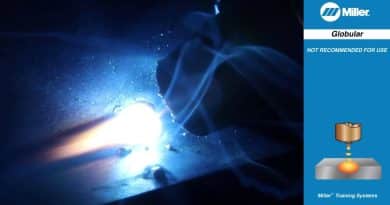The first Web3 phone is here
Solana just launched their Web 3 phone! On the one hand, it’s a pretty interesting step towards more mainstream adoption. The other day, due to its downtime, Solana’s reputation wasn’t the best the past year.
Are any of you guys getting it? I’m too stuck to the Apple ecosystem at this point to switch.
Here’s what we got today:
- Solana Launched Saga: The first Web3 mobile phone.
- Real World Assets: An introduction to the RWA narrative.
- Around the Web. Yield-Generating Stablecoin, Stablecoin Bill, and more.
Reading time: ~7 minutes
Here’s your Edge 🗡️!
p.s. We’re experimenting with 2 newsletters this week. We’ll send another one on Friday. We’re testing our systems to see if we can handle the workload while maintaining our quality standards.
📉 The Markets
|
|
Sources: Coingecko, DeFiLlama, Fear & Greed Index
“The Secret of change is to focus all of your energy not on fighting the old but on building the new.” – Socrates
📱 A New Saga for Mobile
|
|
Saga, the very first Web3 mobile phone, has arrived!
Last Thursday, almost 10 months following the initial announcement, Solana officially launched Saga, the world’s first smartphone focused on Web3.
Here’s a quick overview:
- The $1,000 phone comes with a USB-C cable, a physical seed phrase paper, plus, of course, the phone itself.
- Saga’s operating system is based on Android 13, and the phone has 512 GB of storage and 12 GB RAM packed behind a 6.67’’ OLED display.
- The battery is 4011 mAh, designed to last for up to 48 hours.
- Additionally, the phone’s cameras are impressive – a 50MP main camera, a 12MP ultra-wide lens, and a 16MP selfie camera.
“Okay, Edgy, another generic smartphone, so what?”
How is this phone different?
What makes Saga unique is its Solana Mobile Stack (SMS), a simple toolkit that efficiently ties crypto utility into the phone’s software – including all the security features typically associated with a hardware wallet. Sending, receiving, trading, and storing crypto on this phone is very easy.
Seed Vaults are another differentiator. It is a vault (duh) for your wallet’s seed phrase, locked into a secure space and tied to your biometric signature. So even if your phone gets lost or stolen, your crypto is safe.
Seed Vaults also make transactions on the Solana Blockchain very smooth. You can swap, mint NFTs, approve contracts, and much more by just touching the screen a few times.
The Solana team has also built a custom dApp store that only gives access to crypto applications.
dApps can use the SMS to link their products to Saga quickly. Currently, 16 applications are already live, including:
- Wallets: Phantom, Solflare, and Ledger
- DeFi apps: Marinade, Jupiter, and Mango
- NFT apps: Magic Eden and Minty Fresh
It’s even possible to instantly mint NFTs with pictures you have just taken.
Wrapping up:
Right now, you can order the phone as a pre-order. Here’s the link to pre-order.
If you’re one of the first 10,000 people to order, you earn the exclusive right to mint a Saga NFT, which comes with additional features and cryptocurrency rewards.
It’s a bold move from Solana Labs, considering that previous attempts to develop crypto smartphones by companies such as HTC and Sirin Labs did not fare well.
However, Saga could represent a huge step in the right direction for mass adoption in the crypto space. It’s a big opportunity to put crypto in more people’s pockets.
One of the biggest barriers is that Solana’s reputation isn’t the best now.
TOGETHER WITH
zkLend: L2 Money-Market on StarkWare
DeFi Money Markets are a staple in on-chain ecosystems, enabling a source of capital for borrowers and yield for lenders.
Today’s sponsor is zkLend! They’re an L2 money market built on StarkNet that combines zk-rollup scalability, faster transactions, and lower costs with Etheruem’s security.
Supported by institutions like Delphi Digital and Starkware, zkLend offers two solutions:
- Artemis is a permissionless service that enables any user to deposit, borrow, and lend assets
- Apollo, a permissioned and compliance-focused solution for institutional clients
Let’s focus on Artemis.
Currently, on testnet, Artemis enables users to lend and borrow assets. The protocol also tokenizes debt and allows borrowers to take flash loans.
How can you benefit? 🤔
Two main use cases:
- Earn rewards by providing liquidity to the protocol
- Take on leveraged positions – imagine you’re bullish on a particular asset and hold $150 worth of it. You can use this $150 as collateral and receive a $100 loan in another asset. This $100 can then be swapped into the initial asset, effectively giving you a leveraged position with $250 worth of exposure to the asset you’re bullish on.
Stark now and test out Artemis on zkLend!
Thank you zkLend, for sponsoring this week’s newsletter!
🏠 An Introduction to Real World Assets
|
|
One main criticism surrounding Crypto is its lack of “real world usage.” Other than the occasional Crypto payment, not many people use Crypto on a day-to-day basis.
There is one sector that I’m bullish on in the long term and that I’m keeping an eye on:
Real World Assets.
What are RWAs? Real World Assets are physical assets that can be tokenized and represented on-chain. An example is fiat-backed stablecoins: $1 is held in a bank and then tokenized on a blockchain. Anything can be tokenized.
Below are some other examples:
• Precious metals
• Carbon credits
• Commodities
• Real estate
• Equities
What’s cool is that RWA protocols are already here. This isn’t a theory.
Which are currently the top RWA protocols?
- RealT allows you to buy fractional and tokenized ownership in U.S. real estate.
- MakerDAO has ventured into real world assets to diversify the collateral types that back its stablecoin DAI.
- Goldfinch provides undercollateralized loans to companies in emerging markets, including Africa, SE Asia, and LATAM.
- Swarm Markets tokenizes traditional financial assets. They’ve already brought TSLA, AAPL, and U.S. treasury bills on-chain via Polygon.
- Centrifuge enables companies to mint NFTs representing real world assets. These NFTs can then be used as loan collateral.
Why do we need RWAs? RWAs will give DeFi a new yield source. Physical assets will get DeFi superpowers once they’re on-chain, including:
- Save money – cut out the middlemen and rent seekers.
- Smaller investments – can’t buy the whole property? Buy a smaller piece with a token.
- Loan access – facilitates emerging-market businesses getting funds.
- Enhance liquidation – especially in traditionally illiquid markets like real estate, fine art, and private equity.
- Transparency – economic value and history of ownership are visible.
However, the road to the promised land isn’t easy. There are several challenges associated with RWA adoption:
- Assets can be seized due to centralization.
- Hacks – a risk with anything on-chain.
- Limited regulatory frameworks for crypto and RWAs.
- Bad debt – crypto collateral can be liquidated fast. RWAs can’t.
- Heavy reliance on USDC – most RWA protocols use USDC, which is centralized.
- Americans face restrictions due to securities/investor laws plus KYC/AML procedures.
- Time-consuming – tokenizing physical assets involves legal, technical, and operational challenges.
- Not decentralized – uncollateralized loans rely on centralized parties for underwriting and determining credit.
I currently have zero RWA exposure. In my opinion, the RWA ecosystem isn’t fully matured yet. With the amount of risks involved, it doesn’t make sense for me to get an 8% yield on my stablecoins.
So, I’m not too confident about it in the short-term. But I’m bullish on RWAs in the long-term.
Dive deeper here: Binance report.
PROJECT HIGHLIGHT
A New Yield-Generating Stablecoin: OMMF
I came across this in my research and thought it was an interesting project. I have zero relationship to this protocol and have zero exposure to the project.
In the last section, we introduced you to the RWA narrative, which is gaining momentum. Last week, Ondo Finance announced a new product, OMMF. OMMF is a yield-generating stablecoin-like token.
What is Ondo Finance? They focus on providing institutional grade investment products on the blockchain. With their protocol, you can invest your $USDC in:
- U.S. treasuries
- Short-term bonds
- High-yield income via corporate bonds
You get tokens in exchange for your investments which accrue value and can later be redeemed for underlying investments.
They’ve also created on-chain utilities for tokens via Flux Finance. This facilitates 24/7 lending and borrowing of stablecoins against Ondo’s tokenized treasuries.
What is OMMF? It is a new stablecoin-like token. It will be pegged at $1. But it is different from other stablecoins. How?
- It is backed by money market funds.
- Holders will be airdropped new OMMF tokens daily as yield.
How does it work? You deposit your stablecoins or fiat into Ondo. They invest your money in money market funds, essentially mutual funds that invest entirely in low-risk and short-term debt securities.
You receive $OMMF in exchange for your deposit. The yield from the money market funds is distributed to you daily as new OMMF tokens.
Investors can also always mint and redeem OMMF for $1 on business days.
In a way, this is a better stablecoin: It is cash that automatically generates yield as long as you hold onto it.
However, there is a catch: Because it is structured as a security, it is only available to qualified purchasers and accredited investors.
Degens can still access the yield indirectly by lending their $USDC to Flex Finance. But then again, that’s kind of like Aave or Compound.
This yield-generating stablecoin won’t be directly available to degens due to regulations. And it constitutes the biggest challenge to RWA adoption.
Bottom line, we need better regulations for DeFi.
Dive deeper:
🌎 What’s Happening?
📰 Industry News
U.S. House Committee published a draft of the stablecoin bill. This comes in the aftermath of LUNA blowup and $USDC depeg. It is the first major crypto legislation of 2023.
Twitter partners with eToro to offer trading services for crypto and other assets directly to Twitter users. This seems to be part of the goal to become an “everything app.”
Cosmos ecosystem was saved from a potential ‘eight-figure’ exploit. A vulnerability involving Ethermint was discovered and blocked before it could cause any damage.
Zipmex’s rescue investor failed to deliver its promised 100% payment. V Ventures now only wants to pay creditors 10 to 20 cents on the dollar.
SEC reopens dark pools rule. It has been called a backdoor attempt to regulate decentralized Finance. It will force DEXs into the regulator’s scope.
🍿 DeFi Bites
Kyber Network has found a potential vulnerability and has advised all KyberSwap Elastic liquidity providers to withdraw funds. Investigations are ongoing, and no user funds are lost.
Arbitrum Improvement Proposal aiming to return 700 million ARB governance tokens failed by an overwhelming majority. Foundation will hold onto it for now.
Uniswap’s mobile wallet is now live in Apple’s App Store. Apple was infamous for blocking crypto apps due to its restrictive policies.
OlympusDAO decided to buy more $ETH for the treasury backing of the OHM token. This rebalancing comes as Ether rallies off a successful Shapella upgrade.
Balancer’s service providers revealed they are slashing their operating budgets and laying off staff ahead of a strategy pivot. The news comes as the protocol also faces broader market pressure.
Hundred Finance got hacked on Optimism for around $7 million. The team is trying to contact the hacker to recover some or all of the stolen funds.
🧠 Twitter Alpha
1/ A brief intro on Ethereum withdrawal mechanisms, how to make sense of withdrawal data, key metrics to look into, and misconceptions to avoid.
Primarily referencing @nansen_ai data but will share alternative sources whenever appropriate as well. pic.twitter.com/5I94dG8SKX
— Martin Lee | Nansen 🧭 (@themlpx) April 16, 2023
[New Post] Transactions are moving into the application. We discuss the rise of transactional workflow engines, how databases are evolving to executive arbitrary code, and how the two are on a collision course 🙂
w/ @stuffyokodraws @satishtalluri https://t.co/uhFzJYGITn
— martin_casado (@martin_casado) April 14, 2023
Transaction Costs on Arbitrum, Optimism, and L2s are about to get x10 Cheaper. How?
A Comprehensive Guide to EIP-4844 🧵👇 pic.twitter.com/ftYgMuHCm5
— francesco (@francescoglt) April 17, 2023
L2s are scaling Ethereum, but the vast number of rollups threatens to break composability within the Ethereum ecosystem, fragmenting liquidity and creating friction.
Enter: the shared sequencer. 👇https://t.co/PdiUXyTBNK
— Espresso Systems (@EspressoSys) April 17, 2023
😂 Meme






